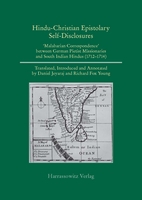|
|
Download:
Please note: With adding digital Products to your cart
the payment will be handled via PayPal. The download will be provided after the payment is confirmed. This volume presents for the first time a complete English translation of all 99 Tamil Letters gathered and translated into German by the early Lutheran Pietist missionaries to India, namely Bartholomäus Ziegenbalg (1682–1719) and his colleague Johann Ernst Gründler (1677–1720). They attempted to help their European readers to en-gage with what Tamil people said of themselves, their history, litera-ture, religions, women, children, agriculture and the like. The mis-sionaries disclosed their theological and missiological intentions to the Tamils. The Tamils, in turn, did not accept them uncritically. They sent written responses to their inquiries in which they disclosed their deepest loyalties and practical priorities that gave them meaning, purpose, and satisfaction. The missionaries believed that the more European readers would familiarize themselves with the worldviews and customs of the Tamil peoples, the more appreciation, care, and concern they would have for their own religious institutions and cul-tural symbols. This kind of cross-cultural impact has very few paral-lels in the 18th century.
These Tamil Letters are now nearly 300 years old; yet they have retained their authentic freshness. Modern readers can still dis-cern, though faintly, Tamil voices and interactions with Europeans and European attitudes towards the Tamils. Even today, this kind of Hindu-Christian self-disclosure, in an atmosphere of mutual trust and friendship, may have relevance for the ways in which we try to pro-mote better understanding between people of different faith commu-nities living and working in our own neighborhoods. The Tamil Letters are given in translation with rich annotations and explana-tions. |
|||||||||||||||||||||||||||||||||||||||||||




